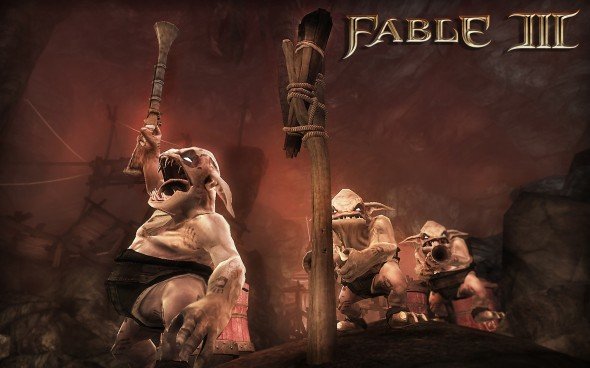Fable 3 preview

What took Microsoft so long? Fable 3's been out on Xbox 360 since October last year. You could write two books in that time, or cure some minor disease. A skin rash or something. Up to now, there's been little explanation from either developer Lionhead or publisher Microsoft as to why their game took such a torturous route to get to the PC, or why release dates were dangled and then pulled.
And having spoken with Fable 3's lead designer Josh Atkins, it seems we'll never get a complete answer. Josh was unable to point to any specific reason for the delay, suggesting that although there was indeed a PC build running alongside the 360 version early in development, real work on our version of the game didn't start until that version shipped.
But what we've lost in timeliness, Josh is adamant us PC gamers have gained in improvements. There are things that the Guildford-based developers took on board after their console launch, and learned from abortive PC builds earlier in the creation process. I got to sample the major change during the game's first two hours.

Start a new game as either prince or princess of Albion (a cod-medieval cod-England), and you get a choice 360 players didn't: to play on 'challenging'. Josh describes this as the game's 'hardcore' mode, and it means health – recharging on the standard setting – can only be refilled with dedicated healing potions, or through sleeping in one of the kingdom's beds.
It's nowhere near the full overhaul – nothing close to the hardcore variants of games like New Vegas. Choosing the 'challenging' setting necessitates no drinking of water, management of sickness or gobbling of food: instead, its main effect seems to be the prolonging of combat. Fable 3 uses a three-tier fighting system: swords, hammers and similarly smashy friends for melee bludgeoning; rifles and pistols for lengthier kills, and magic for area of effect and direct damage.
Deep into the game's first dungeon, and I'd had time to get comfortable with all of these styles. The mousewheel flips between stances like you would weapons in a shooter, so when the glowy blue lights hanging from the dungeon's ceiling manifested themselves into warrior skeletons and shambled toward me, I was happy closing the distance. I'd picked the rifle as my primary firearm, and squeezed off a clip at the mass of bleached bone in front of me. On standard setting, they'd splinter and collapse. On challenging, the bullets barely make a dent.

I switch it up, roll my mousewheel up to 'magic', and get clicking. The basic magic attack is a fireball, and its flame coalesce in mid-air with a powerful hiss. I hurl ball after ball at my bony foes, but the effects don't quite match the sound. Still, a gang of undead saunter toward me. I hold the right mouse button instead of tapping the left, and wait as a small circle emanates from my character. A few more seconds and the circle doubles in size, encompassing the first line of skeletons. Releasing the button coats them in fire – the AoE attack does more damage than the standard fireball, but there's still a core of ten skeletons moving toward me.
Keep up to date with the most important stories and the best deals, as picked by the PC Gamer team.
One final mousewheel scroll brings out my hammer. As long as my body and tipped with a hunk of cold metal, it's does well applied to the brittle bones of my enemies. One swing, and a weakened skelly disintegrates. Keeping the combo going, I burst another two, before one of the larger beasts takes a ponderous swing. This being 'hardcore', I'm conscious of my health bar – so I take a leap, using the space bar to evade the oncoming attack. There's a pleasing speed to the dive – I'm out of combat and back on my feet in seconds, ready to hop back in with hammer raised.
Happily, there's no need to use an Xbox 360 controller to achieve this control fluidity. Before my play session began, Josh – as well as detailing the hardcore mode – noted that the game's control system was a sticking point. He noted that earlier builds didn't focus on the strengths of the mouse and keyboard, and rightly identified that PC gamers would react badly to a flimsy port. The result is as close to natural a feel as a third person game gets – my only complaint was a slight lag in camera-spin speed that was ameliorated by turning 'mouse-smoothing' down in the game options.

The Fable 3 we get won't be a gigantic departure from the version released half a year ago. But it's worth noting that Lionhead, in that apparent dead time, have looked closely at the benefits of the PC, as well as specific negatives of their game, and are aiming to produce the best version of Fable 3 available. Better late than never.

